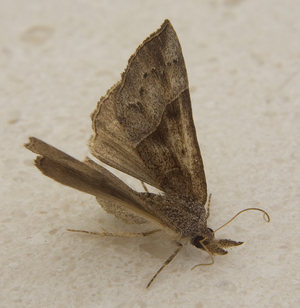How to Prevent Clothing Moths in Your Closet
- Details

Clothing moths are an all too common pest throughout the country. They’re not as vulgar as cockroaches or flies, as they don’t carry disease or eat through your pantry - but they cause damage of another kind. If you’re particular about your clothes and fabrics, you don’t want to wait around to get rid of a moth infestation. As soon as you see one moth, it is time to start preventative measures. You may not even see the moths, as they are adept hiders who avoid the light and nest in the darkest recesses of your closets. However, if you’re pulling out clothing items and suddenly finding holes, you may want to do a closer inspection.
What to Look For If You Suspect Moths
There are many different types of moths but the kind that you should worry about causing damage in your closet are webbing clothes moths and the casemaking clothes moth. These two species are commonly found across North America. Webbing moths (Tineola bisselliella) are about ¼ of an inch long and are yellowish to brownish in color. Casemaking clothes moths (Tinea pellionella) are about the same size and white or cream-colored.
Both of these types of moths will lay hundreds of eggs so an infestation can happen quickly. If you’re suspicious but don’t see any moths check in the corners of your closets, including around the molding, or in the lining or in the crevices of your drawers. One female can lay up to 1,500 eggs at a time! The larvae that hatch immediately begin to settle on and feast on your fibers. They especially prefer natural fibers like silk, wool, and cotton, but will eat through synthetics as well.
How to Get Rid of a Moth Infestation
In order to stop a moth infestation, you must curb their lifecycle where you can. Carefully clean out all the clothing from any overrun areas.
You may want to put all the clothing through the washing machine to remove any larvae or eggs that you may not notice right away. Moths can be killed through heat or cold, so either run them through a hot cycle or two or place them in plastic and put them in the freezer for a week and air dry them.
While you carefully put all the clothing into bags and launder it, you can use cleaning products to remove any eggs or living moths from your closet or drawers. Use bleach or a mixture of vinegar and water and a paper towel to remove the debris left behind by the moths. Be sure to get into the cracks and corners to be as thorough as possible.
Preventing Clothing Moths from Coming Back
Once you’re done cleaning your clothing and closets, you may try some preventative measures to keep the moths from coming back. If there are any expensive clothes you’re especially worried about, consider placing them in plastic bags or tubs for the time being, until you’re sure you’re rid of the moths completely. You may also want to vacuum any rugs or carpets in the area as moths commonly lay eggs in those too.
Some suggest using small mesh bags with crushed herbs that moths hate, like bay, rosemary, cedar, cloves, and thyme. Leave these bags in your closet or in the drawers to detract moths in the future.
Call in the Professionals
The problem with DIY treatments is that the pests almost always come back. All it takes is one egg left behind for the infestation to start all over again, and this may cost you more at the end of the day. Between the damaged clothing items and money spent on pesticides and cleaning products, you’re likely better off calling in the professionals. At Eagle Pest Services, we can make this process easy by having a professional inspect the area and perform the extermination quickly, so you can rest easy.





